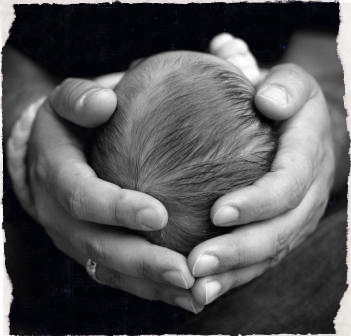Cranial osteopathy is not different to osteopathy, it is the name given to a subtle and refined approach to osteopathy that follows all the principles of osteopathy, but that includes the anatomy and physiology of the head.
Cranial osteopaths use a highly trained sense of touch to feel subtle changes of tension and tissue quality in the living anatomy of the whole body, and to diagnose areas of strain or dysfunction.
The osteopath is often drawn to areas in the body that have been affected by past events, such as old accidents and injuries. The body may have learned to compensate for a traumatic event or injury and the patient may be unaware that there is anything wrong, but the effects may still be present and relevant to current symptoms.
Diagnosis and treatment are intimately linked as the osteopath works to activate the innate ability of the body to heal itself, and by offering gentle and specific support where it is needed to bring the tissues into a state of balance and release, to restore it to health.
Using this approach, the osteopath learns to listen to and be guided by the body’s inner knowledge of what is wrong, which may be different to the patient’s opinion and the osteopath’s opinion. This helps the osteopath to understand and treat the cause of the symptoms, to reduce the chance of symptoms returning in the future.
Cranial treatment appears so passive, how do I know that anything is happening?*
Observing cranial treatment can be compared to watching someone reading a book. From the outside nothing much appears to be happening but, if you are the one reading the book, you are transported into a rich world of structure, colour, depth and emotion. As you continue to read, the story unfolds.
In a cranial treatment, an osteopath is deeply connected to the inner world of living anatomy and physiology. Listening carefully the body can tell the story of what has happened to it, what trauma (emotional or physical) it has suffered and, how it is trying to cope with the legacy of these traumas.
In treatment the osteopath is guided by the tissues and support the re-balancing or release of areas of dysfunction. The body has an amazing ability to heal itself and maintain its own physiology in a state of health and uses the re-balancing during osteopathic treatment to re-establish healthy physiology.
What sort of patients or conditions can be helped with cranial osteopathy?*
This approach to osteopathy is a way of viewing the body rather than a type of technique and it can be used on every patient – we treat people not conditions. Cranial osteopathy is widely known for the treatment of babies but is equally effective for children, adults and the elderly. In any osteopathic treatment, the whole body is involved and improvements are often noted in different areas and different systems than just the symptomatic one.
What does cranial treatment feel like?*
Cranial osteopathic treatment is very gentle and relaxing. During the treatment some people are aware of different sensations, such as mild tension, aching or sensitivity that gradually disappear, or of feelings of warmth and relaxation. Other people are unaware of anything happening at all during the treatment but are aware that they feel very different afterwards. Most people become deeply relaxed during treatment and it is not uncommon for people to fall asleep.
Does cranial osteopathy have a scientific basis?*
With every advance in scientific understanding of physiology, in particular the physiology of fascia, fluids and electromagnetics in the body, we are gradually validating the theory and palpatory experiences of cranial osteopaths. There are also a number of clinical studies investigating the effects of cranial osteopathic treatment. The Sutherland Cranial College of Osteopathy is currently supporting a research project (https://www.babycheckbath.org/mission/) into the effectiveness of osteopathy in treating babies with feeding difficulties or other causes of distress. Initial results look promising, with the first 110 evaluation forms showing that 85% of parents rated the service at a score of 8/10 or above and a 1/3 of these parents rated us as 10/10, and 99.1% would recommend the service to another family. 60% of parents were not familiar with osteopathy before referral to Baby Check. The project has now advanced to looking at how osteopathy influences breastfeeding outcomes for babies with feeding difficulties.
If you would like to book an appointment please call 01580 212293 or send us an email.
*The above FAQ’s are extracted from the Sutherland Cranial College website. https://scco.ac/osteopathy/what-is-cranial-osteopathy/
 Moat Osteopaths
Moat Osteopaths
Recent Comments